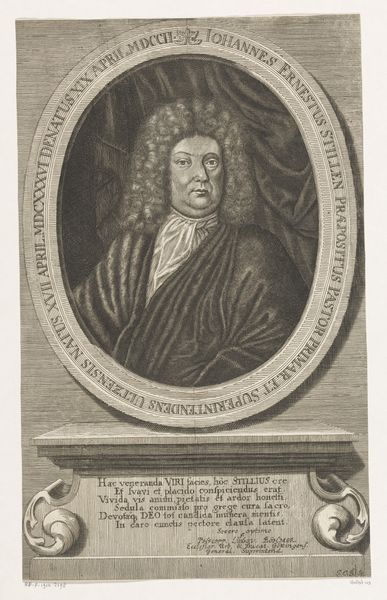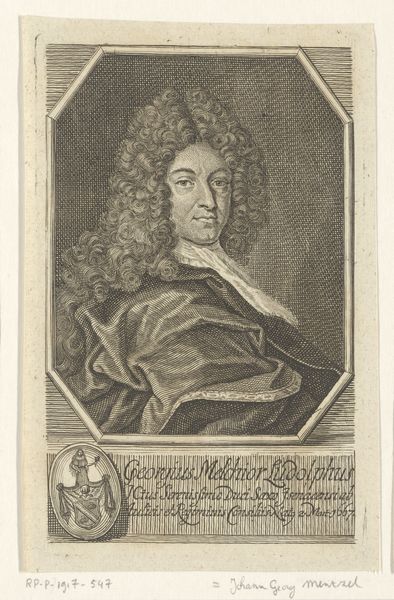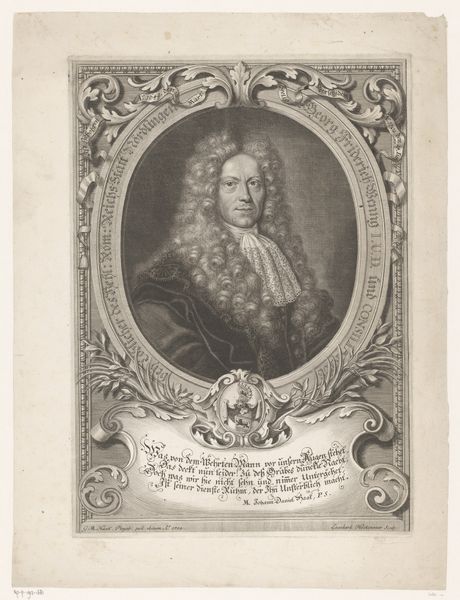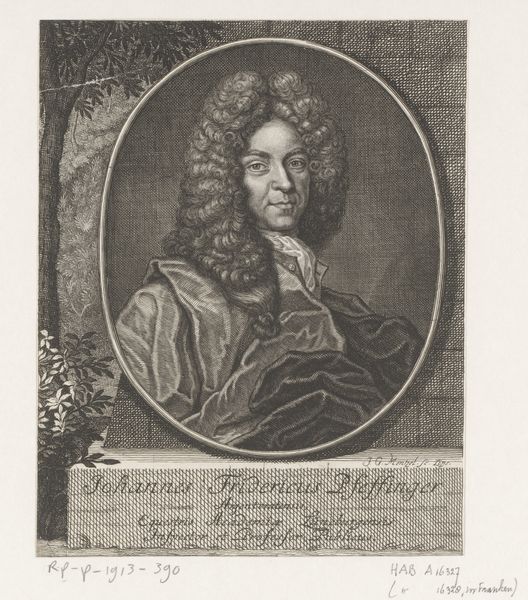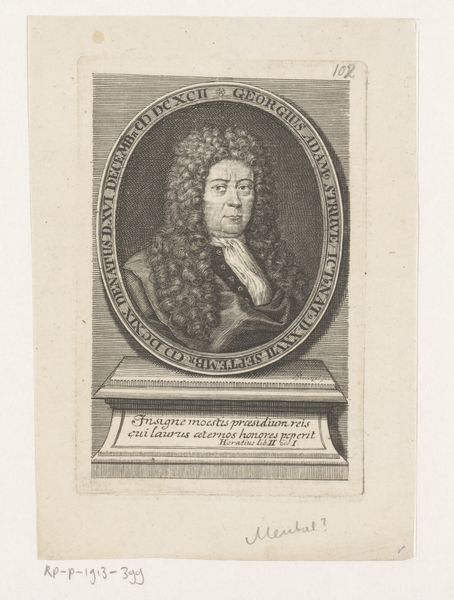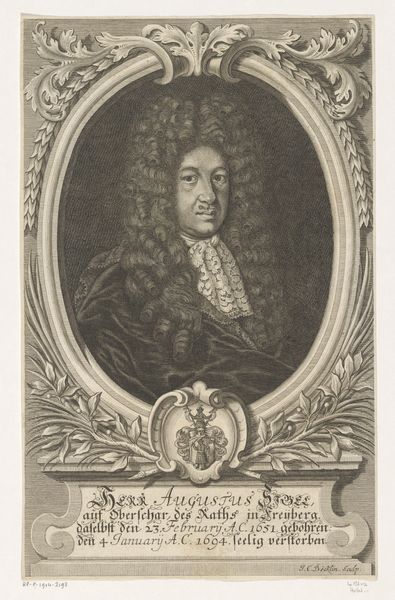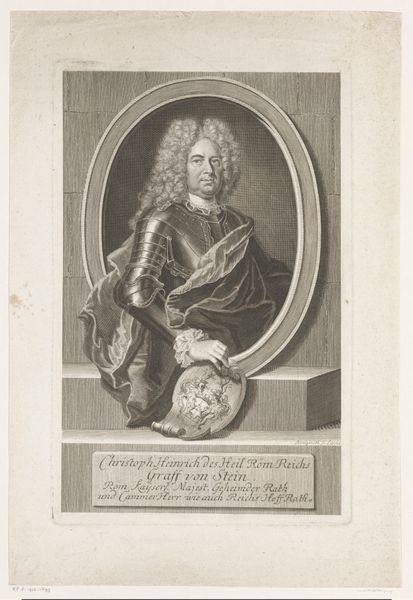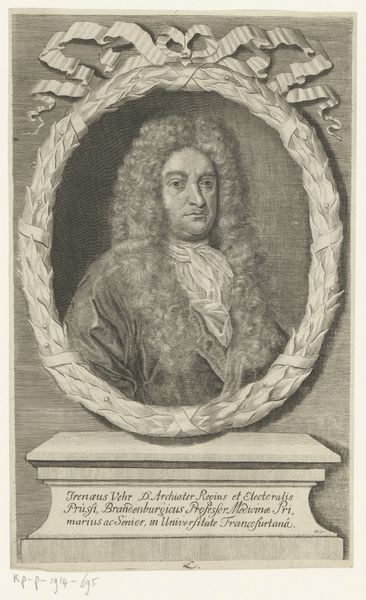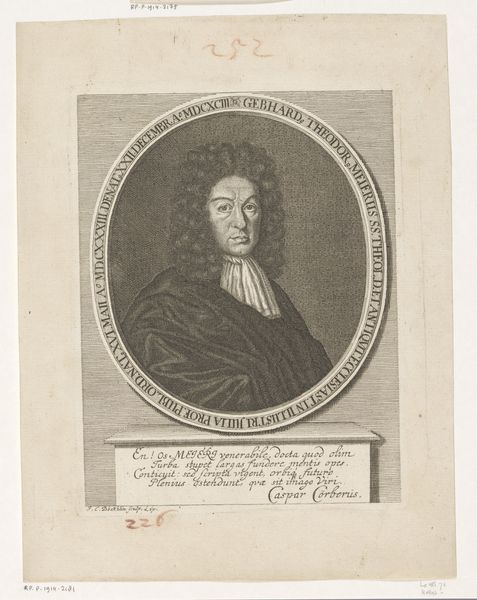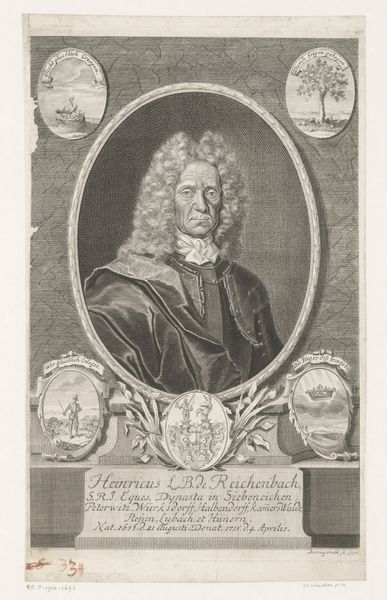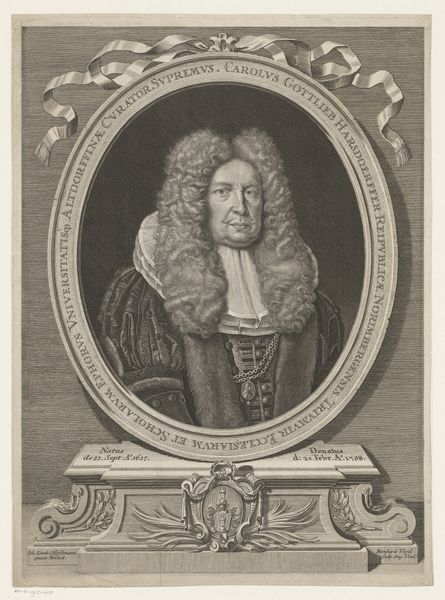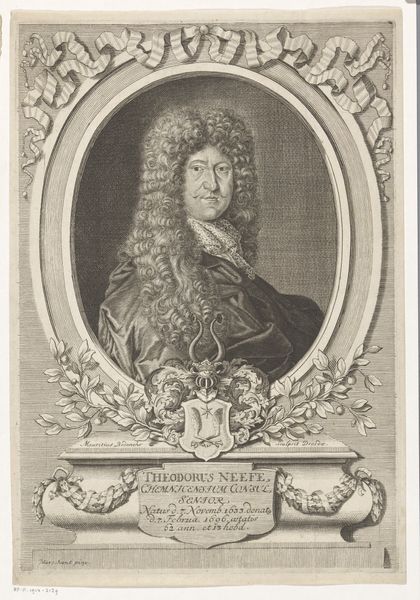
engraving
#
portrait
#
baroque
#
old engraving style
#
caricature
#
portrait reference
#
portrait drawing
#
academic-art
#
engraving
Dimensions: height 178 mm, width 128 mm
Copyright: Rijks Museum: Open Domain
Curator: Looking at this engraving by Johann Paul Hoffmann, dating roughly from 1669 to 1721, titled "Portret van Theodor Ernst Zahn," I am struck by the formal rendering of the subject. Editor: My first impression is the sheer exuberance of that wig! The tight, spiraling curls practically burst from the oval frame. It almost overwhelms the subject, doesn't it? Curator: Indeed, but let's consider the societal context. These extravagant wigs were statements of status. Think about the labor involved. Hair had to be collected, painstakingly styled. The person in the portrait is asserting wealth and authority. What could it reveal about the engraving as a commodity itself? Editor: Agreed. Yet, visually, consider the precision of the engraved lines—notice how they create gradients to suggest depth, especially in the drape of the cloak. This engraving offers a masterful deployment of light and shadow—or rather, the absence of it— to define form and texture. Curator: And look closer. The plate impression is key here. How many copies were made? To what audience was this portrait circulated? Perhaps among legal professionals, considering Zahn was an advocate. These are all revealing details tied to social functions and production. Editor: Perhaps. I do wonder, if we consider semiotics, whether the text cartouche serves primarily as label, or plays an integral part in the formal composition of the image. The ornate typeface and swirling lines give a base, an anchor that pulls our focus back in line. Curator: The baroque period certainly loved this kind of embellishment. Consider the material conditions as well—the cost of copperplates, the workshops involved, the system of patronage. These all factored into the image that was finally presented. Editor: Interesting points about economics, although in essence this is a piece defined by balance: the curves of the oval are offset by the squared cartouche; and we are presented by the almost unnerving gaze directed squarely toward the viewer. What do you think this visual strategy evokes, this Baroque intensity? Curator: Well, thinking materially and socially, for those viewing this piece originally it perhaps signified stability and accomplishment, carefully composed according to a defined value system of craft and power. Editor: So, through these differing perspectives, we appreciate how portraiture as an art object is a meeting place between social statements and skilled formalism, inviting layered reading.
Comments
No comments
Be the first to comment and join the conversation on the ultimate creative platform.
